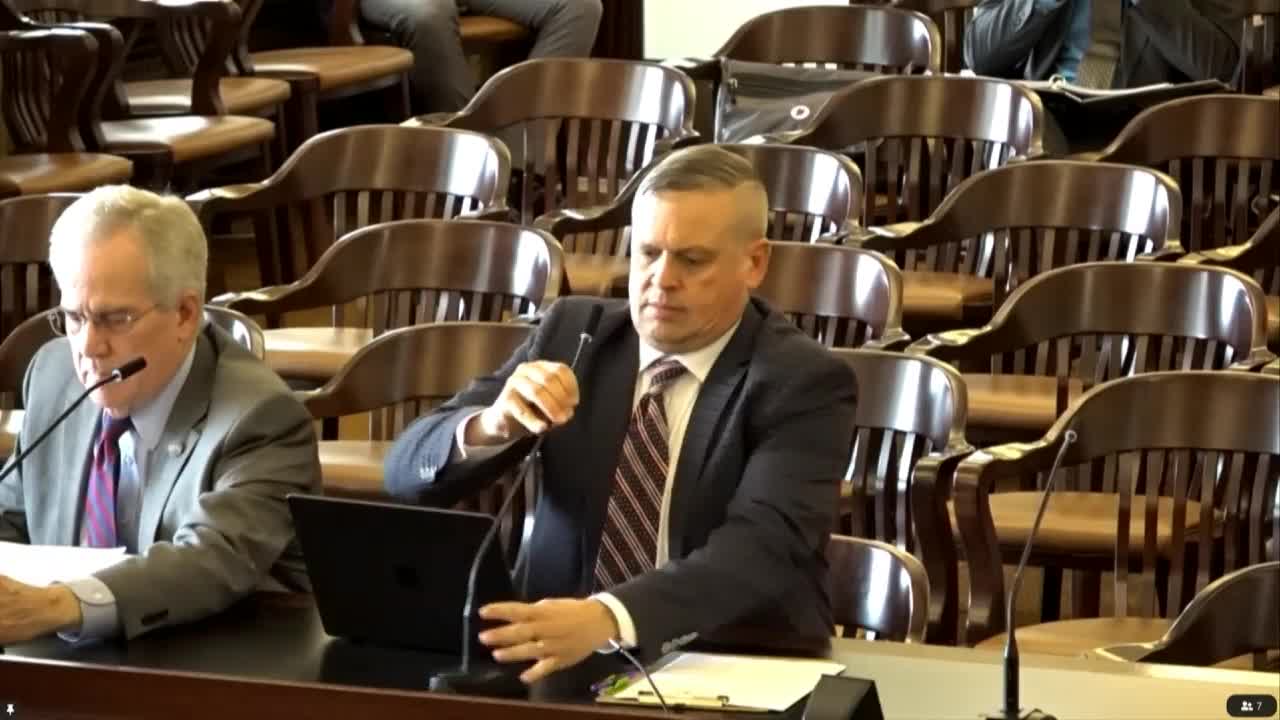Panel urges federal flexibility to ease 'benefits cliff' for workers
February 14, 2025 | 2025 Utah Legislature, Utah Legislature, Utah Legislative Branch, Utah
This article was created by AI summarizing key points discussed. AI makes mistakes, so for full details and context, please refer to the video of the full meeting. Please report any errors so we can fix them. Report an error »

The House Revenue and Taxation Committee on Feb. 14 voted unanimously to send HCR 8 — a nonbinding resolution sponsored by Representative Strong — out of committee with a favorable recommendation. The resolution asks the president and Congress to provide states more flexibility in administering certain federal benefit programs to reduce so-called “benefits cliffs.”
Representative Strong, the resolution’s sponsor, said the measure is a message bill: it requests federal flexibility so Utah can pilot creative approaches to ease abrupt benefit losses that can discourage work advancement. The sponsor said state conversations have included the governor’s office, Utah’s federal delegation and outside partners such as the Sutherland Institute.
Panel discussion and examples
During the hearing, Representative Strong and testifiers described cases in which people turned down raises or promotions because small income increases could trigger loss of larger federal benefits. Stan Rasmussen of the Sutherland Institute told the committee Utah is a national leader in upward mobility and program administration but that federal rules constrain state-level innovation to reduce work disincentives.
Nick Dunn, testifying online, framed the resolution around two principles: that work and earnings should make families better off, and that federalism should allow innovative state approaches. Representative Daley Provo warned committee members that debates about Medicaid can politicize otherwise narrowly tailored fixes; she urged colleagues to focus on the substance of policy responses for specific populations, such as adults with disabilities.
Action and outcome
Representative Elison moved that the committee send HCR 8 out with a favorable recommendation; the committee approved the motion unanimously. The chair briefly discussed placing the nonbinding resolution on consent but withdrew the motion after staff clarification that nonbinding resolutions are automatically placed on consent.
What the resolution does and does not do
HCR 8 is a message resolution requesting federal action; it does not change state law or appropriate funding. The resolution asks federal actors to consider granting states additional administrative flexibility to pilot programs or phase out benefits in ways that reduce abrupt income cliffs.
Why it matters
Supporters said state-level flexibility could allow Utah agencies to test tapering strategies or other approaches to make modest income gains attractive and reduce long-term dependence on safety-net programs. Opponents were not recorded during this hearing; committee discussion indicated bipartisan interest in pursuing federal engagement.
Votes at a glance
- Motion to pass HCR 8 with a favorable recommendation — mover: Representative Elison — outcome: passed unanimously.
Ending
The resolution moves forward from committee as a formal request to the federal government to permit state-level pilot approaches to benefits administration, with sponsors and outside partners prepared to provide examples and data to federal decision-makers.
Representative Strong, the resolution’s sponsor, said the measure is a message bill: it requests federal flexibility so Utah can pilot creative approaches to ease abrupt benefit losses that can discourage work advancement. The sponsor said state conversations have included the governor’s office, Utah’s federal delegation and outside partners such as the Sutherland Institute.
Panel discussion and examples
During the hearing, Representative Strong and testifiers described cases in which people turned down raises or promotions because small income increases could trigger loss of larger federal benefits. Stan Rasmussen of the Sutherland Institute told the committee Utah is a national leader in upward mobility and program administration but that federal rules constrain state-level innovation to reduce work disincentives.
Nick Dunn, testifying online, framed the resolution around two principles: that work and earnings should make families better off, and that federalism should allow innovative state approaches. Representative Daley Provo warned committee members that debates about Medicaid can politicize otherwise narrowly tailored fixes; she urged colleagues to focus on the substance of policy responses for specific populations, such as adults with disabilities.
Action and outcome
Representative Elison moved that the committee send HCR 8 out with a favorable recommendation; the committee approved the motion unanimously. The chair briefly discussed placing the nonbinding resolution on consent but withdrew the motion after staff clarification that nonbinding resolutions are automatically placed on consent.
What the resolution does and does not do
HCR 8 is a message resolution requesting federal action; it does not change state law or appropriate funding. The resolution asks federal actors to consider granting states additional administrative flexibility to pilot programs or phase out benefits in ways that reduce abrupt income cliffs.
Why it matters
Supporters said state-level flexibility could allow Utah agencies to test tapering strategies or other approaches to make modest income gains attractive and reduce long-term dependence on safety-net programs. Opponents were not recorded during this hearing; committee discussion indicated bipartisan interest in pursuing federal engagement.
Votes at a glance
- Motion to pass HCR 8 with a favorable recommendation — mover: Representative Elison — outcome: passed unanimously.
Ending
The resolution moves forward from committee as a formal request to the federal government to permit state-level pilot approaches to benefits administration, with sponsors and outside partners prepared to provide examples and data to federal decision-makers.
View full meeting
This article is based on a recent meeting—watch the full video and explore the complete transcript for deeper insights into the discussion.
View full meeting

